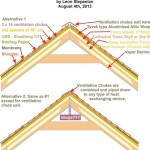What Is the National Debt Ceiling?
The national debt ceiling is a legal limit on the amount of debt that the U.S. government can borrow. The current debt ceiling is $31.4 trillion, which was set by Congress in December 2021. If the government reaches the debt ceiling, it will not be able to borrow any more money to pay its bills, which could lead to a government shutdown or a default on its debts.
The debt ceiling was first established in 1917, when Congress gave the Treasury Department the authority to issue bonds to finance World War I. The debt ceiling has been raised many times since then, most recently in 2021. However, there have been several times when Congress has come close to not raising the debt ceiling, which has led to concerns about the consequences of a default.
There are two main arguments in favor of raising the debt ceiling. The first is that it is necessary to avoid a government shutdown or a default on its debts. The second is that it allows the government to continue to borrow money to fund its operations and programs.
There are also two main arguments against raising the debt ceiling. The first is that it will increase the national debt, which could lead to higher interest rates and inflation. The second is that it will allow the government to continue to spend money irresponsibly.
The debate over the debt ceiling is often partisan, with Republicans generally opposed to raising it and Democrats generally in favor of raising it. However, there is no consensus on the issue, and it is likely to remain a contentious issue for years to come.
How is the debt ceiling set?
The debt ceiling is set by Congress. The House of Representatives and the Senate must both pass a bill to raise the debt ceiling, and the president must sign the bill into law.
The debt ceiling is usually raised when the government reaches or is close to reaching the current limit. The government can also borrow money to pay its bills, but this is only a temporary solution. Eventually, the government must raise the debt ceiling to avoid a default.
What happens if the debt ceiling is not raised?
If the debt ceiling is not raised, the government will not be able to borrow any more money to pay its bills. This could lead to a government shutdown or a default on its debts.
A government shutdown would occur if the government does not have enough money to pay its employees, contractors, or other obligations. A default would occur if the government does not pay its debts when they are due.
Both a government shutdown and a default would have serious consequences for the economy and the country as a whole.

Q A Everything You Should Know About The Debt Ceiling Wed 01 18 2024 12 00 Committee For Responsible Federal Budget

Us Debt Ceiling What It Is And Why There One Bbc News

Charting The Rise Of America S Debt Ceiling

The U S Debt Ceiling Has Risen No Matter Who Is In Office
Legislative Federal Debt Ceiling Council On Foreign Relations

Congress S Early Task What To Do About National Debt Ceiling Csmonitor Com

U S Debt Ceiling Costs And Consequences Pbs News

The Debt Ceiling And Balanced Budget Amendment Cato At Liberty Blog

Thirty Two Years Of Bipartisan Debt Ceiling Raises Mercatus Center

The U S Debt Ceiling And Its Global Implications








